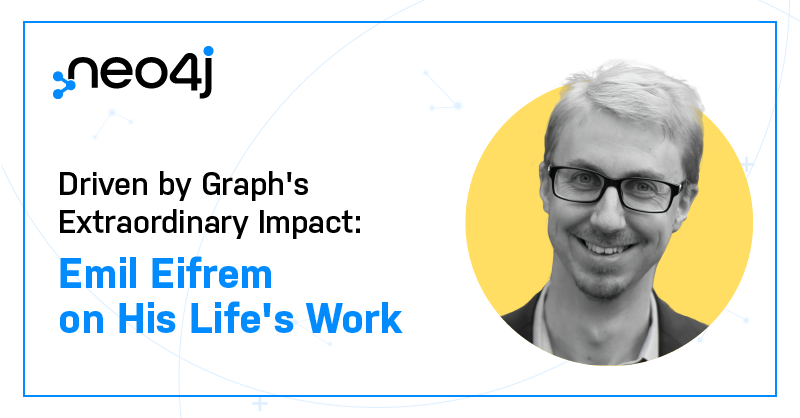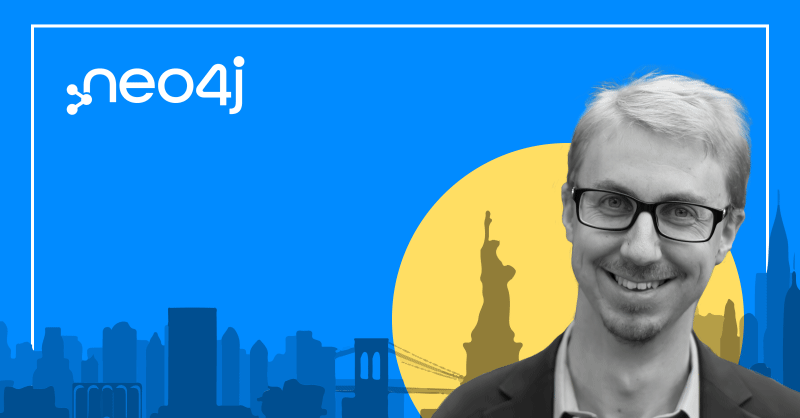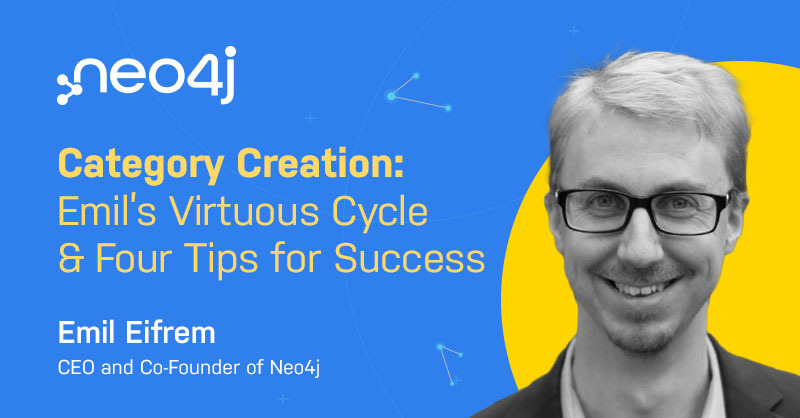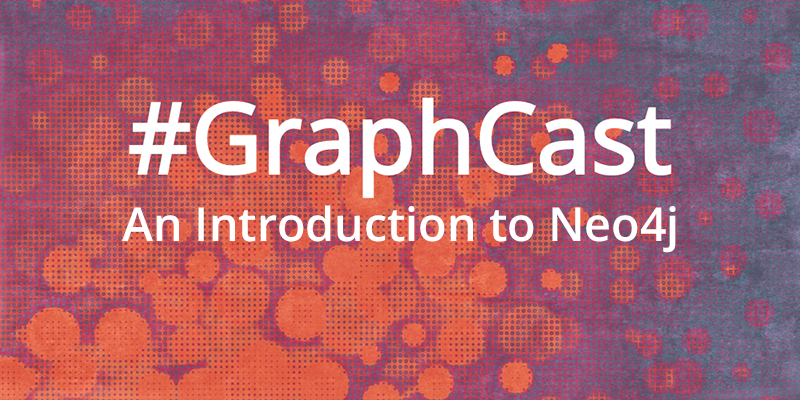Emil Eifrem on Neo4j’s Rise, Rapid Growth in APAC, and the Thrill of Competition

Vice President, APAC Marketing
16 min read


Our CEO and Co-Founder Emil Eifrem sat down with Brian Fernandez of Biztech’s Enterprise Technologies show to discuss the origins and rise of graph databases and Neo4j’s development as a company. Among other subjects broached were Neo4j’s focus on the Asia-Pacfiic Region, advice for young entrepreneurs, what it means to be a category creation company, and the validation of competition.
Emil shares tons of personal revelations and professional insights, and we’re thrilled to be able to repackage it here, for you. Enjoy the conversation!
Brian Fernandez: Welcome to Biztech’s Enterprise Technologies show, where we feature tech companies that are innovating in the large enterprise space. We talk about burning technology questions and topics that are top of mind for CEOs and the C-suite of companies.
Our featured company today is Neo4j which is a graph database management system company with a core product that is cutting edge. Now, here to tell us more is Emil Eifrem, the CEO and Co-Founder of Neo4j. Emil, welcome to the show.
Emil Eifrem: Thanks Brian. Great to be here.
Brian: Now, Emil, let’s start by giving us an overview of Neo4j and what graph databases are really all about.
Emil: Yeah. So at the highest level, we’re a database company, right? And so we are the software that stores the information of the world, right? And the specific point of view that we have on databases and on data is that the world is becoming increasingly connected and that generates more and more connected data. So we’ve invented a new type of database, which is called graph databases, which is modeled after how the human brain works. So the human brain has neurons that are connected to other neurons through signups, which builds up a network. And in mathematics, that’s called the graph. And so that’s why they’re called graph databases. And it turned out that that type of an approach is amazing for finding patterns in data.
Brian: Tell us about the evolution, because I’m from the era of 20 years ago, where there were relational databases, then there were key value databases, and then now graph databases. Why do graph databases then deliver a superior outcome for companies that use them?
Emil: That’s a good question. And you mentioned the word “relational” database, and it’s kind of a weird thing because relational databases are not good with relationships. What they actually are is they’re tabular databases. So they work like Excel, right? So you have rows and columns. It’s tables, and they were invented in the ‘70s and it’s an amazing technology. It’s super valuable. It’s good for a lot of different things.
But think back on what the world looked like in the late ’70s, when the tabular database was invented, right? The main use case for computers in business was I have some kind of a business process. Someone is filling out a form somewhere. Let’s instead put that form into the computer. This is way before digital transformation. That was as simple as it was. And you can think about the world back then and the data that was recorded on that form. You can just feel how tabular and well-structured it was. And you can imagine that the database that was invented to store this looked like a table. So it made perfect sense.
Fast forward to today. We live in this amazingly complex, connected, dynamic, ever-changing world and the world of information. It’s just night and day. And so we, today, what we’ve built is this approach called a graph database, which is centered around how things are connected. And that just ends up being a superior model for the information of today, which is why – if you look at all the big web giants, if you think about the Googles, the Facebooks and the Alibabas – you go down the list, none of them are using relational databases. They’ve all built their own foundation, a graph database foundation, which is why Facebook talks about the social graph, which is why Google talks about page rank for doing searches. And what we’ve done is we’ve taken that same approach, and we make it available to everyone else.
Brian: Before we go deeper into that in terms of – I’m going to ask you about use cases, but before that – tell us a little bit about the Neo4j story. It was started in 2007. Walk us through your evolution and how you got to starting off in Asia.
Emil: Yeah. So 2007 is when we formed the company and we raised our series A a few years later in 2011. But actually the origin story goes earlier than that. And it actually has – and you mentioned Asia – an Asia connection. So in the late ’90s, early 2000s, in the first IT bubble, I was working at a small company in Sweden. I’m Swedish origin. Small tech startup company.
We ran into exactly the problems that we were talking about here. Where we had databases that were very tabular in nature, but we had data that was connected and exploding and changing and complex. It didn’t fit well, and we were trying to figure out what to do about that.
And we had an intern who was from a school out of India, specifically IIT Bombay. [Ed. note: The Indian Institute of Technology Bombay.]
Brian: Okay, it’s a good school.
Emil: Yeah. It’s a fantastic school. And it’s more common, I think, for IIT Bombay students to enter maybe in the U.S. or in the UK, but for whatever reason, he’d found his way to Sweden. And we really hit it off. And we started thinking together. Like, I was the CTO of this startup and he was an intern, but I was in my early 20s and we hung out socially as well as professionally and together with my co-founders. This guy, Anuj [Maheshwari], we just started talking and brainstorming about, is there a better way of working with data?
And so when we then decided we needed to build our own database, we started working with a team of students out of IIT Bombay. I was on my way flying to Bombay that I pulled out like, literally a cocktail napkin on the flight. This was way pre-COVID. Pre-COVID, remember, we used to be on these things called flights, I pulled up a cocktail napkin and started sketching out a new model for data, which is centered around nodes and relationships between nodes. And so it was really born on that initial journey to Bombay 20 years ago.
Brian: And now who are your customers basically, and how are they using your products to gain a competitive gauge?
Emil: That’s a good question. So we have customers all over the world in every single vertical industry known to man. The 20 biggest banks in North America – all of them are using Neo4j. One of the biggest banks in Asia is using Neo4j. Seven of the 10 biggest retailers in the world, including Walmart [Ed. note: At the time of this published transcription, Walmart is no longer a customer of Neo4j] and eBay. Telcos, four of the five biggest in the world, including Orange and Comcast.
And we talked about Singapore before, like StarHub, for example, which I think is the second largest, maybe the larger, one of the top two telcos in Singapore, for example. AirAsia is a big customer of ours. And it turns out that actually 99% of all air fare calculation – so in other words, when you go to a website, either an airline or some kind of a portal thing, and you want to book a flight – that flight calculation figuring out that I want to fly from Sweden to KL [Ed. note: Kuala Lumpur International Airport], for example, right. Okay. Should I connect in Zurich or should I connect, well, how should I connect? That’s actually a connected data problem. 99% of all airfare calculations today use Neo4j. That gives you a little bit of a flavor.
Brian: So it’s a very strong niche in one particular area.
Emil: Yes, that’s exactly right.
Brian: So how long have you actually been in the Asia Pacific market, and where have you seen the strongest adoption?
Emil: Yeah, I mean, I think of Asia specifically as the birthplace, right? That’s the origin. That’s where we invented the entire thing. So from that perspective, we were always rooted there. In terms of commercial, it’s really in the past few years, because we’re headquartered in Silicon Valley and we have our engineering in Europe. So those were the two initial continents commercially. And then in the last few years, we’ve seen a huge surge of growth in APAC. And I’ll give you just a flavor. A couple of weeks ago, [from the time that] we’re recording this [interview], we had our annual online developer conference, which we call NODES, and it had tens of thousands of attendees, right? It’s a massive, massive online conference. 40% of them were from APAC. 40%. So Asia is growing rapidly for us right now. We’re really excited about it.
Brian: And are you seeing the customer profiles mirror your customer profiles in Europe and in the U.S. in terms of the banks, the telcos, the airlines?
Emil: That’s exactly right. Banks, telcos, airlines, retail – very important – health care, government.
Brian: But I would think that this sort of technology would be very interesting for law enforcement and defense potentially.
Emil: Yes. You’re spot on for even the broader kind of government umbrella. If you think about tax fraud, tax evasion, or fraud investigation, that’s a very graphy use case. One of the claims to fame for graph technology was the Panama Papers, if you recall, which was of course the biggest investigative journalism, the biggest data journalism leak, on the planet ever. And it was all stored in Neo4j. That’s where people were found anywhere from Putin to Queen Elizabeth, to the Icelandic Prime Minister to the Prime Minister of Pakistan. There’s a lot of interesting findings on that.
And that was all because if you can imagine that if you want to do tax evasion, if you’re going to put money in a tax haven, then you’re not typically – if you’re a politician directly connected to that bank account, you’re indirectly connected. So you live at an address, at that address someone else lives, that person is an officer of a company, that company has a bank account in a tax haven. So it’s like several hops out. And that’s exactly what the Panama Papers folks used Neo4j to uncover. And that gave us a huge surge with many tax agencies in the world. So that’s another example.
Brian: Okay. Now, how is Neo4j’s graph technology different from people like TigerGraph, who we’ve also had on the show before?
Emil: Yeah, it’s a good question. So maybe I’ll take you back in history a little bit, and then I’ll come back to this question.
So when we started out, we were the first to invent the graph databases. And we actually put the words “graph” and “database” together after that formative time in India starting out with a cocktail napkin on the fly. And then we designed the thing in Bombay, and so on and so forth. We had the concepts, but we didn’t have a name for them. We called the product, we called it Neo. But what was Neo? Was it a database? Yes, and no. I mean, it was a database of course, but that’s a little bit both overselling it and underselling it, because it was not like any of the other databases that people knew at the time, the tabular databases. So it took us a long time to figure out how to speak to it.
And then ultimately we coined the term “graph database” – “graph” existed before and “database” existed before. We put them together. And we said, “Hey, this is what a graph database is. And this is when you should use it. These are the use cases and so on and so forth.” And when you do that, initially, it’s a market of one. It’s a category of one, you’re the only one.
Brian: And also one of the things, Emil, a challenge for you at that time was trying to sell this not just as a concept, but really something to get someone to even listen to you, isn’t it?
Emil: Yeah. That’s exactly right. It was that category creation, the evangelization of the concept and then not just our product. And then coming back to how are we different from other databases or other graph databases? Well, it turns out that initially we were the only one. But then when you choose category creation as your go-to-market strategy, then what does success look like? Success looks like you have competitors. It’s very counterintuitive. I talk to other CEOs and they’re angry about their competitors and stuff like that. I love that we have competitors because we need more people to get the word out there. Because the real competition –
Brian: Right, because when you’re creating a category… You’re right. You’re creating a category. If you’re the voice of one, you’re not going to be heard a lot, but if there are many voices, it’s easier for you to actually get heard, contrary to –
Emil: That’s exactly right. Because the real competition is people not even knowing that there are alternatives to the relational database, that there are other ways of doing business, that you can do things. As part of your digital transformation, you can move to the platform that built Google, the platform that built Facebook, the platform that built Alibaba. And people don’t know this. Getting that word out there is really important.
Now, of course, as it turns out today, just the fact that we got this head start and we were the first in the market means that today we’re bigger than all the other graph databases combined. And we think we have a massive technology advantage. We’re by far the most scalable graph database, by far the biggest developer community, by far the biggest customer base in terms of anchor accounts and just proven technology. And that is, I think, a really, really important foundation. But having said that, the most important thing is just to get the word out there that graph technology as a concept exists.
Brian: Okay. So if you want to get the word out that that graph technology is the way to go, from your customer profile, you’re just in the large enterprise space. Are you looking at a product rollout that will enable smaller customers to be able to use your solution?
Emil: It’s a great question. So there’s two aspects of that, right? One is from day one, we were actually an open source company. So there’s a community edition of our product, which is fully featured. It’s amazing. And you can use it completely for free. You don’t have to pay us anything. In fact, you don’t even have to give us your contact information. You can just go to our website and download it, get up and running. And that’s fantastic. And so small businesses could use that.
But generally speaking, in this day and age, maybe that was fine five years ago. But in this day and age, if you’re a small company, you don’t want to operate database software. You don’t want to hire DBAs. You don’t manage data centers.
Brian: Yeah, you subscribe to a solution.
Emil: You don’t want to do any of that. Exactly. Exactly. And your developers, you want them focused on solving a business problem, not managing databases and things like that. And so that comes through to the second aspect of the answer, which is we’ve launched a cloud version of our product and it’s called Neo4j AuraDB. And it is used by some of the biggest companies on the planet. We’re talking folks like Levi Strauss. We’re talking about folks like World Lines managing the entire underground subway ticketing system for all of London.
And so it’s used by massive companies, but it’s also even more popular with small and mid-market because you can just sign up, you swipe your credit card, there’s even a free tier, so you can experiment for free. And then it has a really low price point of $50 per month. And it just grows as you grow and you don’t have to operate it. You don’t have to do any of that. You can just focus on solving your business problems.
Brian: Let me get your insights as an expert. Let’s zoom out a little bit and get some macro insights from you. You’re a pioneer in the graph database space. What are the broad trends that you’re seeing in graph database basis and also analytics?
Emil: That’s a great question. Maybe let me up-level it even one more level out, just talk about even broadly the database space and the world of analytics and AI and machine learning. The thing here is that – and we touched on this in the early part of the interview – the relational database, the foundation for all of technology for many decades, was invented in the ‘70s. And then it dominated in the ‘80s. I mean, the ‘90s and Larry Ellison, the CEO of Oracle, has bought many yachts and a few Hawaiian islands based on the success of the tabular database.
And then 2010 happened – so the previous decade – and what happened then was basically about an observation that we talked about upfront, which is that the world just looks very different from the ‘70s, right? And so that led to this Cambrian explosion in innovation in databases. When I grew up as a professional developer in the mid ’90s, there were four choices of databases: Microsoft, Oracle, Sybase, Informant. They were all vendor choices. Basically the product was the same. It was exactly the same product.
In the 2010s, that grew from four or five to over 350. So there was this massive innovation in new types of data. But what we’ve seen now for the last several years, it’s a convergence. We have a few winners emerging in the database market. And we’re talking about a handful, like four or five, not one of them. And you probably saw this, Neo4j just announced two weeks ago our series F funding. It’s a $325 million round, and then led by –
Brian: And that value is going to grow to $2 billion, right?
Emil: Over $2 billion of valuation for this company.
Brian: And you have Google Ventures coming in at this round.
Emil: Google Ventures coming in. And it’s actually the largest investment in the history of databases. So that just tells you a little bit about how well positioned we are to be one of those handful of new database companies that can really become massive impactful companies over the next decade. And if you think through them coming back to the broader trends in the space, what’s really going on here is that there’s a crop of new modern databases companies emerging. In a world that has been very static for several years, it’s just been the IBMs and the Oracles of the world, but that’s now actually coming to shape. And that’s a really exciting part of being in the database space.
Brian: Now with this $325 million raise, and that’s a series F raise, how are you going to deploy that capital in terms of expanding the business?
Emil: It’s a good question. So, first of all, we are a technology company. We are a product-first company, so we’re going to invest as much as humanly possible into the product. And so that means growing out that cloud portfolio that we’ve talked about before, it’s growing our new graph data science product, which is an area we actually haven’t touched on, but we have a lot of data scientists using Neo4j to build machine learning and AI. And so invest significantly behind that, but it’s also distribution. And this is a partnership with the major cloud platforms.
You mentioned that Google invested as part of this round. We have a really strong partnership with GCP, the Google Cloud Platform, but also the other big global clouds including the Amazons and the Asher’s and the Ali’s of the world. So that’s a big one, but then also distribution in terms of geographically, and APAC is huge on our latest pack. It’s the number one geography where we want to invest over the next several years right now.
Brian: Now, I want to ask you a question related to you as an entrepreneur. So your journey had started out as an entrepreneur much earlier. In fact, you’ve been an entrepreneur for about two decades right now, in fact, yeah, two decades, right? Just over two decades. In a previous interview, you said that with Neo4j, you’re not a serial entrepreneur, you plan to do this for the next 10 to 15 years. So tell us what your advice would be for entrepreneurs, given the lessons that you’ve learned in the last 20 years or so.
Emil: Yeah, that’s a good multifaceted question. There’s a lot there, obviously. What I tell younger entrepreneurs is that advice is always very circumstantial. So what worked for me happened to work for me at a specific moment in time, and maybe that’ll work for you, but maybe not because you’re different, times are different, the category’s different, and so on and so forth. And dear fellow younger entrepreneur, you’re going to get so much advice from so many people.
The one thing though, the number one thing that you just cannot do too much of is understanding the customer. There’s no way you can over-index on that part. Any time you can spend out with the customer in the trenches, the real users of your product, not just the economic buyer. Everyone gravitates towards the economic buyer, the people that sign the check, but just spend time with the people using your product, getting value from the product. And there’s no limit to how much you can do that, because that’s ultimately what creates that deep intuition in the founder around how to shape both the product and the organization.
Brian: Emil, that’s actually a very good piece of advice that I’m also going to take in. I think you reinforce not just the economic buyer, but the users of the product, really. And with that, Emil, thank you very much for a very enlightening interview.
Emil: Awesome. Fantastic to be here. Thanks, Brian.
Brian: Now, we’ve been speaking to Emil Eifrem, the CEO and co-founder of Neo4j on Biztech’s Enterprise Technology Show. I’m Brian Fernandez. This video will be on our Facebook and LinkedIn site, as well as our website, www.biztech.asia. Please like and subscribe to our various platforms. Thank you very much for tuning in.
Download this white paper, The Top 5 Use Cases of Graph Databases, and discover how to tap into the power of graphs for the connected enterprise.








